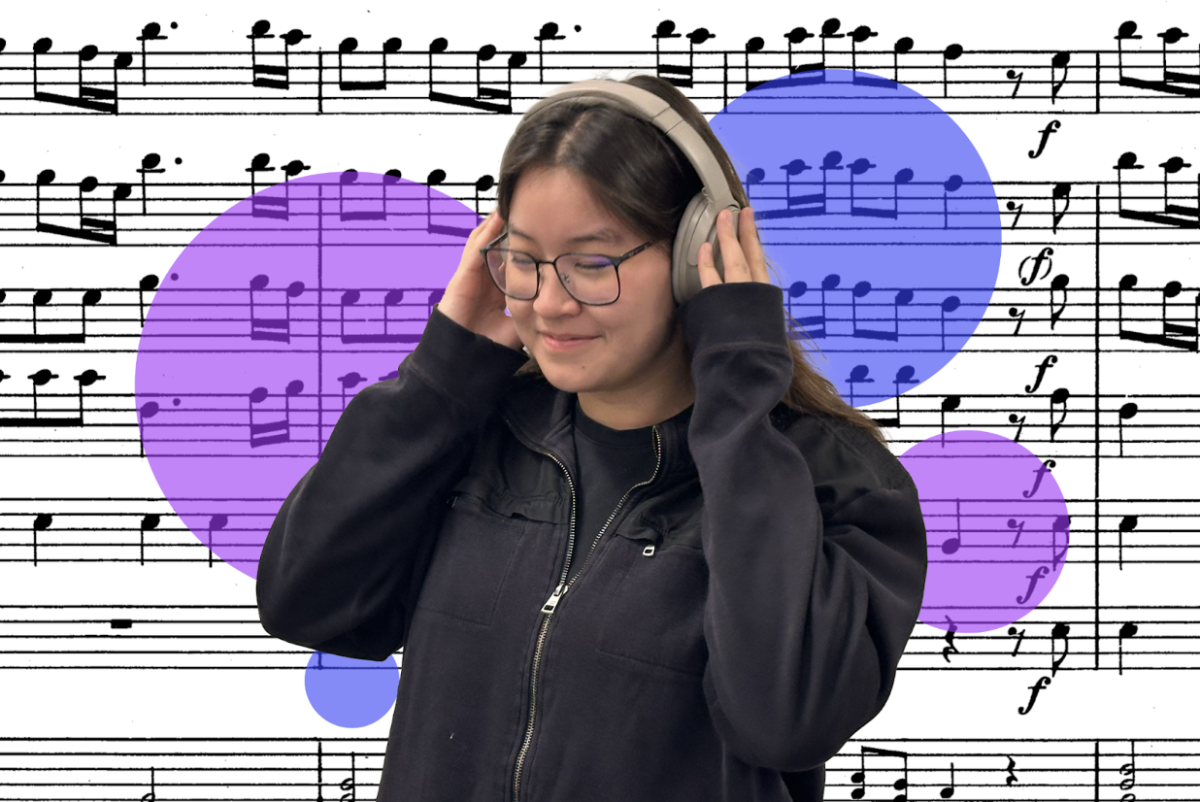Running to the center of the gym floor amidst heavy cheers during the Homecoming Rally, freshman Emmy Harimoto excitedly begins to dance alongside her fellow Korean Club Dance Crew (KCDC) members to “Tell Me” by South Korean sensation Wonder Girls. Harimoto says she performs to international tunes as a way to better understand her Taiwanese-Japanese heritage, finding an intersection with her interest and personal connection with music and dance.
“Music is something that expresses your thoughts and feelings and identifies who you are,” Harimoto said. “In KCDC, it has quite a lot to do with my culture and also my interests in general, and I joined KCDC because I was interested in dancing and in Korean culture.”
Outside of participating in KCDC, Harimoto is also an active member of the local youth ensemble Crystal Children’s Choir, where she sings traditional Asian and international songs in local and international concerts. Harimoto says that these unique experiences have influenced her music taste by giving her comfort in listening to Japanese and Korean pop music.
“Music is a big thing in my family background, and I started music at a young age,” Harimoto said. “It was more cultural exposure, and also my community in general, because the people I surround myself with all love music, so that really influenced me.”
Sharing Harimoto’s passion for music and culture is junior Mahika Pandit, who currently serves as the co-president for the MVHS Indo-American Student Association (IASA). The club hosts Spotlite on India, an annual event that features various types of Indian dance and traditional music, connecting students with their heritage. Pandit was first inclined to join IASA due to her childhood history with Indian music, as well as the safe space the club offered her.
“For a couple years, five to six years, I played the Indian drums, the Tabla,” Pandit said. “I learned that through a guru, and I did shows every year to have fun and just relax after a long day at school. I love that place, because I feel like there’s not many areas or clubs that still offer that safe place.”
Aiming to foster a similar sense of comfort is Chinese teacher Zoey Liu, who incorporates Chinese music for her students of all different backgrounds to help them better learn the language. Alongside fellow Chinese teacher I-Chu Chang, Liu hosts the end-of-year karaoke event for students, testing their Chinese knowledge and connecting them to Chinese culture through musical immersion.
“There are two layers for doing the karaoke event. One is to improve their Chinese language skills, because all the songs are authentic materials, meaning that they are created by native speakers,” Liu said. “The other one, like I said, is to gain perspective about this popular Chinese practice and participate in this practice. And from our years of experience and the feedback from students, this event seems to be like stress relieving, or at least a fun and memorable event for many of our students.”
Likewise to Liu, Pandit believes that intertwining music within IASA activities and her own personal consumption of media has improved her connections to her culture, has helped draw her towards consuming music and content that features aspects of Indian heritage.
“I feel more connected to certain types of music or certain types of artists,” Pandit said. “I watch Indian movies, and I’m like, ‘Oh, I saw you acting in that. I saw you sing. I’m going to watch your movie.”
Liu also notices that the media has helped students more effectively learn languages. Therefore, she formulates her curriculum based upon frequent interactions with Chinese music and the arts, designing it to help students become more versed and comfortable within the language and popular culture.
“Ms. Chang and I try to incorporate about one song per unit, and normally the song is either related to the theme of the unit, or there are vocabulary and grammar structures that are related to what we just learned in the unit,” Liu said. “For example, for the first song we learned in Chinese 4 Honors, is a poem that was transformed into a popular Chinese song about the Mid-Autumn Festival, and we sang it around the same time we learned about it.”
Harimoto says that music’s power extends beyond simply helping students learn languages: she believes it can impact individuals and communities in a more spiritual sense.
“I feel like music is very powerful, because not only does it impact or affect an individual, but it also impacts the society and the world itself,” Harimoto said. “It has the ability to bring people together and unite all of us.”











